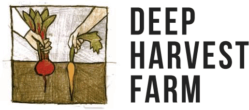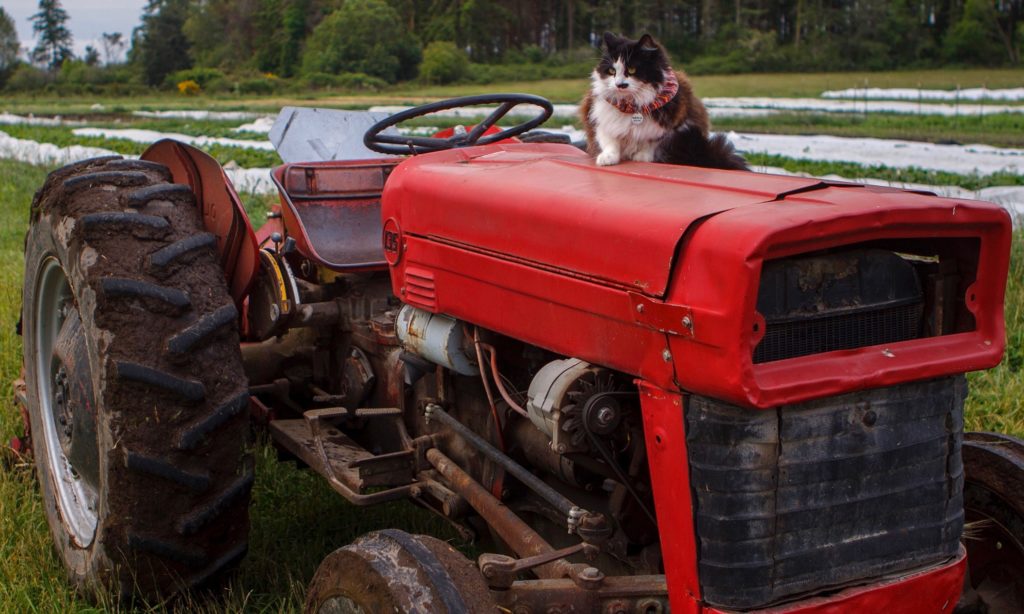 There are a couple distinct ways of approaching one’s small farm business. One approach is to buy all the snazzy equipment right away and assume it will eventually pay for itself in saved labor. Of course this doesn’t always pan out. Some examples of such luxurious small farm tools include new tractors and tillers, snazzy flail mowers and finger weeder implements, paperpot seeders for the fields (look it up, they’re trending on small farms), the vacuum seeder for the propagation house (also fun to google), and the greens harvester to cut salad without bending over (yet again, mr. internet will answer your questions), etc. to infinity and beyond. I don’t know if you know this about us, but we are not those kind of farmers. We are proudly scrappy, making sure a new tool is beyond well-earned before making an investment. After digging over 5,000 feet of potatoes in our first seven years, we decided we’d earned a potato digger. (Could’ve made that minor purchase a couple of years sooner to save the ol backaroo!) After 9 years on a tractor from the 60s and saving up our parsnip pennies, we figured we were due for a tractor with 4WD and some legit horse power. Mighty helpful when driving around in soggy springs! Twelve years in, we deemed ourselves worthy of a grown-up propagation house for our plant babies rather than two hilariously cramped, gardener sized start houses. Until we know for sure a farm addition is really, definitely going to improve efficiency and financially payoff, we hold off. So out we go to the fields to transplant by hand, knowing it’s the right move, at least for us.
There are a couple distinct ways of approaching one’s small farm business. One approach is to buy all the snazzy equipment right away and assume it will eventually pay for itself in saved labor. Of course this doesn’t always pan out. Some examples of such luxurious small farm tools include new tractors and tillers, snazzy flail mowers and finger weeder implements, paperpot seeders for the fields (look it up, they’re trending on small farms), the vacuum seeder for the propagation house (also fun to google), and the greens harvester to cut salad without bending over (yet again, mr. internet will answer your questions), etc. to infinity and beyond. I don’t know if you know this about us, but we are not those kind of farmers. We are proudly scrappy, making sure a new tool is beyond well-earned before making an investment. After digging over 5,000 feet of potatoes in our first seven years, we decided we’d earned a potato digger. (Could’ve made that minor purchase a couple of years sooner to save the ol backaroo!) After 9 years on a tractor from the 60s and saving up our parsnip pennies, we figured we were due for a tractor with 4WD and some legit horse power. Mighty helpful when driving around in soggy springs! Twelve years in, we deemed ourselves worthy of a grown-up propagation house for our plant babies rather than two hilariously cramped, gardener sized start houses. Until we know for sure a farm addition is really, definitely going to improve efficiency and financially payoff, we hold off. So out we go to the fields to transplant by hand, knowing it’s the right move, at least for us.
Category: Our Farming Practices
Reduced Tillage Musings
The quest to reduce tillage, reduce inputs and ultimately, reduce work, continues….
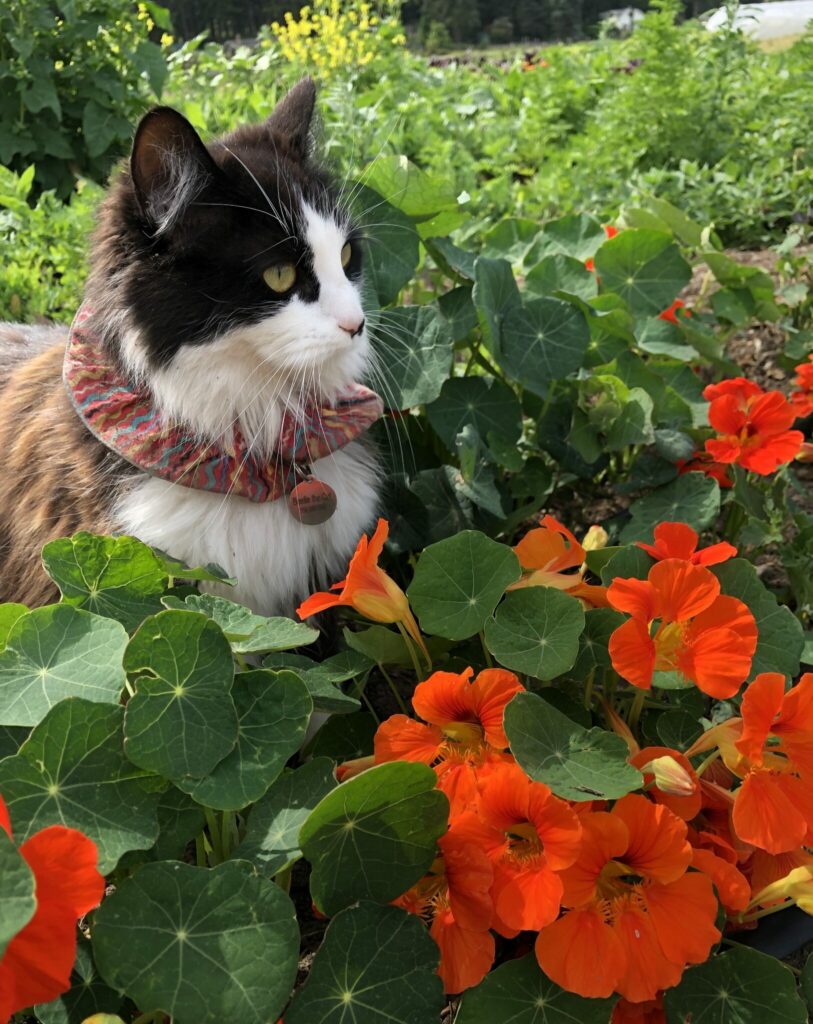
Our soil management regime currently centers around planting annual cover crops in the fall. Usually this is a mix of a legumes and grasses which grow a bit in late Sept/Oct., rest through the cold, dark of winter and surge into growth in spring. They often reach 6 feet tall by May when they flower and become fibrous/carbonaceous.
Working material back into the soil so we can run a seeder through the dirt again is a big process. This entails grazing sheep, flail mowing, tilling, chisel plowing, perhaps tarping, tilling again, maybe raking or some combination. At minimum it’s a 6 week process that requires no less that 4 passes with the tractor per bed. It’s a ton of labor, fuel, and tractor wear and tear, but the worst is the amount of soil damage incurred in the process.
It’s a constant dance of building and destroying soil health, just to maintain status quo. I’m always scheming about how to streamline this process, or otherwise change it up without sacrificing the benefits gained from the cover crops (which are vast). One option is buying compost to maintain organic matter instead of growing cover crops, which doesn’t require mowing and tilling to incorporate. Unfortunately, compost is incredibly expensive to buy and labor intensive to spread. It also doesn’t capture carbon, prevent erosion, maintain soil biology (the rhizosphere of cover crops keeps the soil ecosystem happy through the winter) or suppress weed growth like cover crops do.
One interesting soil management strategy we’ll test next season is the use of live pathways. First we’ll seed a field of, say, red clover in the fall and let it grow until the following spring. Then, we’ll mow the field and strip-till 4-ft wide beds every 7 feet, leaving permanent 3 ft-wide clover pathways between the beds. This field layout could theoretically last for years and hopefully won’t require planting and tilling of cover crop every season. The 4 ft beds will be fertilized, planted, and weeded like normal and then mowed after the crop is harvested. We’ll manage pathways with a 3 ft riding lawnmower which will shoot clover clippings out the side into the bed as a nitrogen-rich mulch. The following spring the bed will hopefully be re-established with a single pass with the rototiller.
Granted, I can foresee a millions ways things could go awry, but hey, it sounds cool on paper. We’ll try to keep you posted on results!
Farm Diseases and Critter Pests
Here’s part 2 of our Farm Foes series. This week it’s diseases and critters!DISEASES:
- Downy Mildew – Wondering why the onions are so small this year? Blame the mildew, which killed their leaves before the onions had a change to swell up. Luckily small is still yummy. It also our afflicts our Russian kales in the late summer and fall.
- Sclerotinia – A fungus that affects the roots and stems of lettuce-family seed crops, including sunflowers. We lost a couple lettuce crops to the fungus this year.
- Late Blight – We haven’t seen any this year, thank goodness, but when it does rear its head you can say goodbye to all the tomatoes. We’ve only had a couple years when it’s been a major problem. Growing under tunnels and greenhouses generally keep the tomatoes dry and fungus-free.
- Powdery Mildew – Not a serious disease, but a life-shortener of chard, zucchini and cucumbers. Good riddance. Who wants to pick those plants for months on end anyway.
- I can’t think of any more economically significant diseases, which is pretty great!
OTHER CRITTERS:
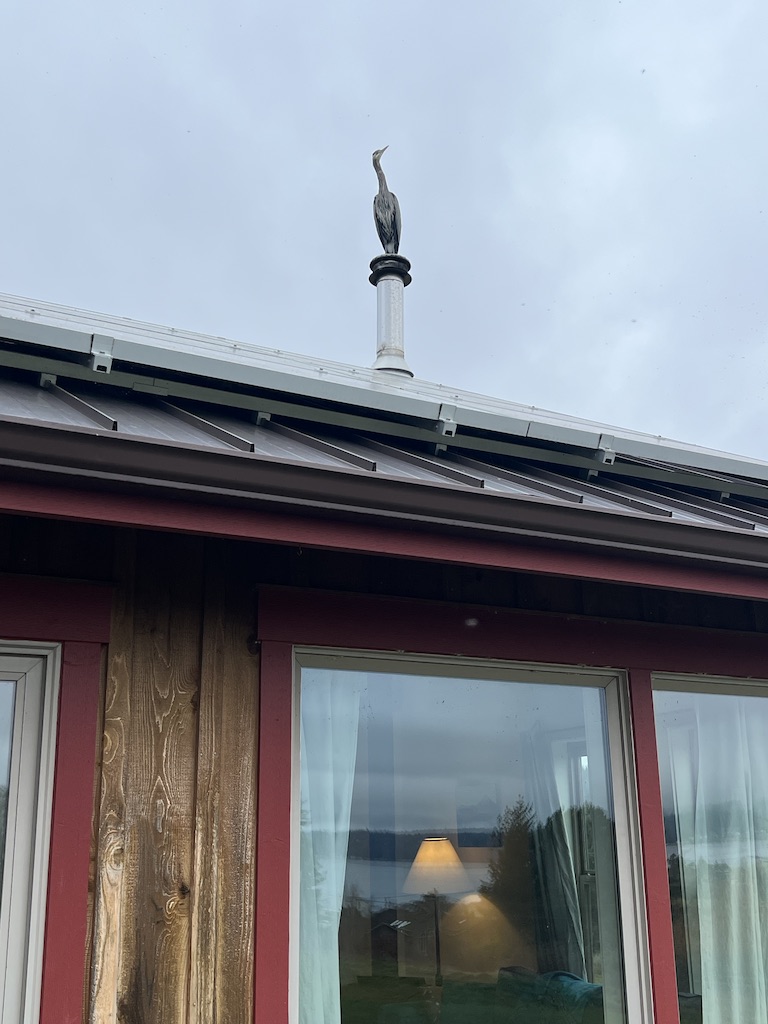
- Birds! – We love em, but they’d completely annihilate many of our seed crops without bird netting. Finches are the worst for small seeded things (brassicas, cosmos, spinach), and blackbirds for larger seeds (sunflowers, corn).
- Slugs – We all know what slugs do. I think 20% of our farm budget went to Sluggo during that endless wet spring of 2022. Unfortunately, our ecological management practices like cover cropping and maintaining undisturbed perennial zones also create ample slug habitat.
- Voles – Come fall, these critters get audacious and develop a particular taste for carrots, beets and radishes.
- Deer – They can’t do too much damage on the vegetables, but can wreak havoc overnight on our little fruit trees if we leave the gate open.
- Coyotes – We’ve lost a chicken or two or thirteen to these wily beasts.
Farm Weeds
It’s breathtaking: the naturally occurring biodiversity that magically appears to stake its claim on one’s organic field. Dozens of weed species, insect pests, and countess bacterial, viral and fungal diseases. Not to mention the vertebrates, which can’t be underestimated. These species put the ‘work’ in farming and keep us permanently on our toes. Here’s the first in a two-part series on the top tier nemeses that make their way into our daily farm lives. This week: Weeds! Next week: Diseases and Beyond!!! It’s a whimsical balance between letting all these scrappy cohabitants have their lunch and allowing us to make some cash.
WEEDS:
1. Hairy nightshade – Our most prolific and aggressive summer weed. Fast growing with a
strong root system, forming hundreds of small green berries packed with seeds.
2. Lambs quarter – A nutrient rich relative of spinach and quinoa, it’s our fastest growing weed and a producer of thousands of minuscule seeds per plant.
3. Canada Thistle – Our most existentially threatening weed. Thistle forms aggressive horizontal roots systems that are aggravated and spread from digging and tillage. In a pasture it may be managed by repeatedly mowing, but in annually worked vegetable fields there are no real organically-certified suppression methods. We tried tarping, digging, burning and an organic herbicide, which it all laughed off. Thus, we had to take one of our fields out of organic certification (and production) for the three years to spray a patch. It blows in every year from neighbors’ fields, and without a well-funded, county-wide management the problem with continue to worsen.
4. Field Bindweed – While this isn’t widespread on the farm, it has cropped up in a few locations and is spreading like wildfire. Like, thistle it forms spreading roots systems that we can’t figure out how to kill with organic methods. Unfortunately, we’re going to have to pull out two new beds of strawberries, because it has spread aggressively under the black plastic. We’ll put this area into pasture for a few years and mow it like crazy in an effort to wear this plant out.
5. Chickweed – Our most serious cool-season weed, but not a huge nuisance. Once the fall crops mature, we let chickweed run rampant, as it doesn’t compete with the crops at that point and acts as a makeshift cover crop. It can be a pain though during our super long, wet springs.
Small Farm Tractor Implement Talk
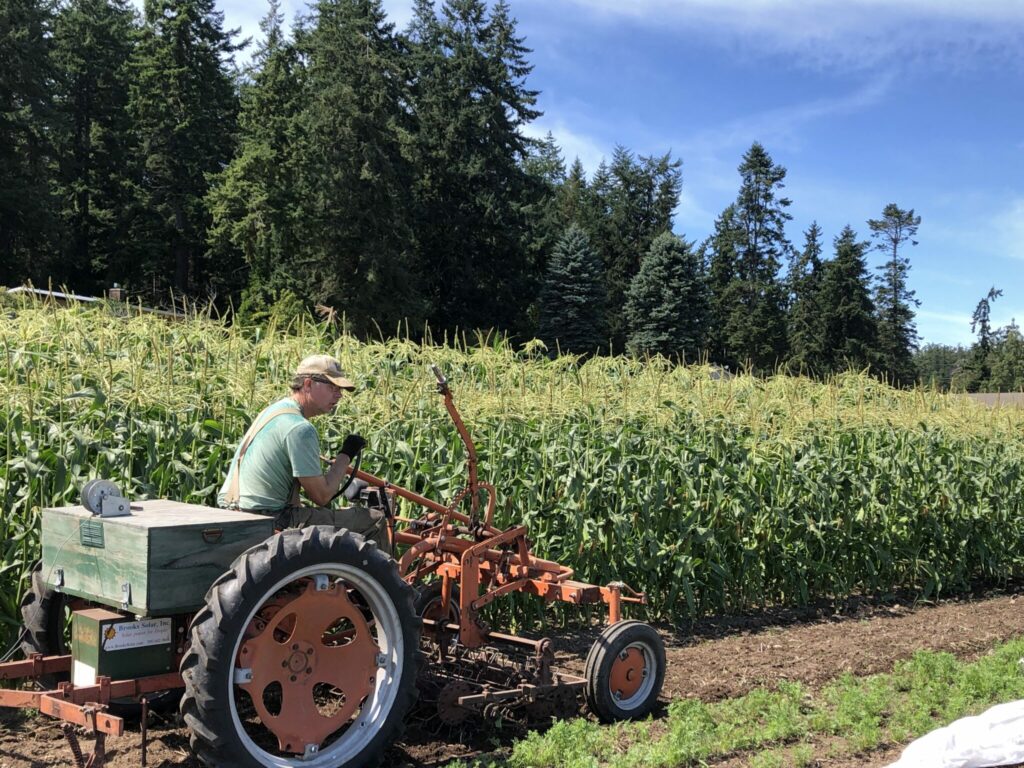
Wondering what kind of fancy tractor implements we use on this little organic farm? I know you are. The curiosity has likely been eating away at you all year, so apologies for not getting around to the subject sooner. While most small farms rely heavily on hand labor for harvesting, weeding, trellising, etc. having a tractor is pretty nice for moving dirt around without throwing your back out. Very small farms, generally under a couple acres, often rely on 2-wheel tractors like a BCS or other model, for tilling, plowing or harrowing small areas. We also use a 2-wheel tiller for getting inside tight spaces like greenhouses and tunnels, but mainly we use our 45 HP Branson tractor for tillage type of work.
The main implements for the Branson tractor are as follows:
Flail Mower – Chops up cover crops and cash crops into small pieces for quick breakdown into the soil.
Brush Hog – Faster and coarser than the flail. Good for mowing large areas of grass.
Chisel Plow – 2’ deep, 18” shanks that break up compaction and help aerate subsoil.
Rototiller – Used shallowly to incorporate weeds, cover crop, or vegetable residue into the soil. Also the final step in bed preparation to create a nice soil texture for seeding.
Cone Spreader – Spreads fertilizer (lime, feather meal, dolapril, etc.) evenly over a 30 ft width. Holds 400lbs of fertilizer per load.
Middle Buster – A big shovel like tool that is dragged to create trenches for potato planting. Also doubles as a potato harvester!
We also have a 15HP electric cultivating tractor that we drive over young crops to weed between rows. Gotta plant in straight, parallel rows for it to work!
We’re always geeking out on new tools to possibly add to the arsenal, but equipment is expensive and usually doesn’t pay off unless it’s a great fit for your farm system. We’re eyeing a Power Harrow for 2024, which is like a fancy rototiller, but creates less soil disturbance and compaction.
Tomatoes (and bloggers) Gone Wild
Tomatoes (and newsletter writers) Gone Wild
You may have noticed that here at Deep Harvest
we are unequivocally pro-tomato. Eleven years into farming, we’re still experimenting with an obscene number of new varieties, ever searching for the best and the brightest (ie the most flavorful and highest yielding) solanaceous fruits possible this side of the Cascades. Why? Because the people demand it!! Ok, not really. Simply because with think they’re fun, beautiful, delicious and generally beloved. Am I right? Tell me I’m right! For some practical, but mostly whimsical reasons, this season we’ve sought varieties with traits we haven’t previously offered in our CSA or seed catalog. For example, we trialed various apricot-sized fuzzy tomatoes (all too slow, not tasty enough), Cherokee Purple look-alikes hoping one was as delicious but not so crack prone (again, no dice), Big hand-sized heirlooms, because we think people love those (here there were winners, namely the big creamsicle colored Oma’s Orange and our favorite tomato named after a Russian Space traveler—Cosmonaut Volkov). We won’t bore you with the trials and tribulations of our 1oz determinant red tomato trial. You get it, we have an infatuation that at some point may need to be addressed. But for now… on to tomato care!
Tomatoes are far and away the gold medal winners in categories of neediest and riskiest crops. We seed these divas in early February on expensive heat mats in our start houses. Come March, they’re potted up into 4-inch pots (500 4-inch pots) and get watered early each day to avoid going into cool nights with wet leaves (they hate that!). In May they’re deeply, carefully planted into greenhouses, tunnels or outdoors in black plastic with drip irrigation and trellised with t-posts and twine using the Florida weave (google that one!) or twisted up twine hanging from a special tomato trellising device called a tomahook. We spare no expense to keep them feeling well supported! Once a week, May through mid-August the tomatoes get pruned. Our indeterminant (indefinite growing) tomatoes are snipped to two leaders— that is, we select two main growing stems and cut off all other suckers that appear in order to maximize airflow and minimize chance of disease. Our determinants and cherries just get pruned to make sure harvest is quick and easy and that good airflow is possible. And, and, and— my oh my yipes—I can talk, write and think about tomatoes forever. Please forgive me. My love is clearly vast and overwhelming and maybe oppressive. Sorry tomatoes. And sorry to those of you who are still reading this. Errr… ok….. tomatoes. We love em. They’re difficult. Time consuming. Expensive to grow. But if they don’t get the ever-terrifying late blight, early blights or one of countless other tomato grower terrors, they’re terrific— tomatorrific??? Oof. Ick. Cutting myself off. Thanks for going on that journey with me. The end!
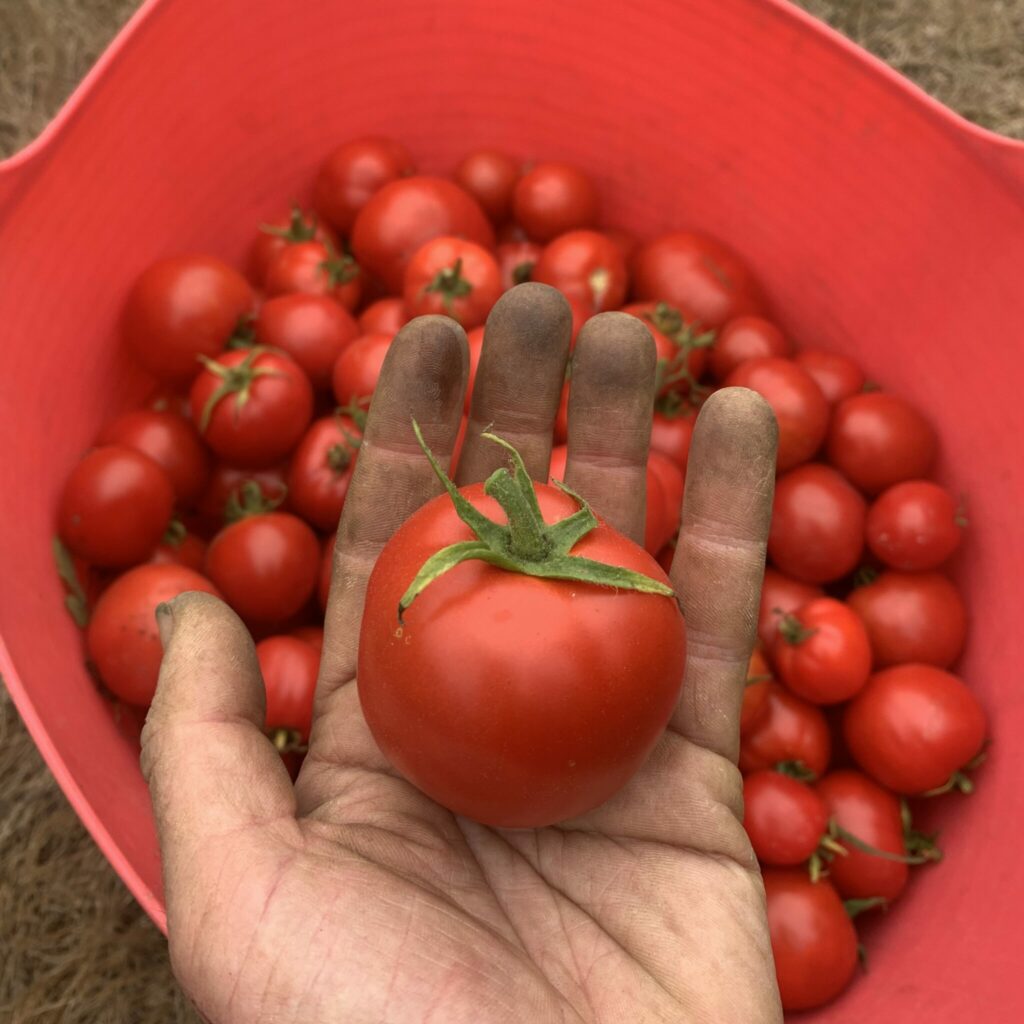
It’s a Bird’s World
And…we’re home. We had a wonderful, whirlwind of a road trip to North Dakota and back. One of the perks for me (Nathaniel) was witnessing dozens of species of migratory birds not usually seen on Whidbey. The Montana and North Dakota grasslands, lakes and wetlands hosted thousands of ducks, shorebirds, song birds and raptors: Golden Eagles, nighhawks, rails, avocets, meadowlarks, buntings, bobolinks, and so many more.
Birds take up much of the conversational space here on the farm, as Brian and I (and increasingly Annie) are avid birders. We consider these winged friends an integral part of the farm community and ecosystem. We all love scoping the harriers, eagles and hawks soaring across the fields and identifying the many sparrows, wrens and finches that perch and sing in our crops. Last year we added a few bird boxes to our fence lines, which were immediately adopted by migratory tree swallows. (The kestrel box was unfortunately hijacked by the invasive starlings.) This year the Cedar Waxwings have begun foraging for berries in our maturing hedgerows and warblers have newly discovered our fruit trees.
But despite their endless majesty the birds often pose significant management issues on the farm. The biggest headache is caused by the finches (house finches and goldfinches) and their voracious appetite for our seed crops. If not preemptively excluded with massive 150′ x 50′ bird nets, finches will completely wipe out a bed of bok choi, borage, spinach or kale seed within a few days. Our grass-nesting savannah sparrows also create a mowing conundrum. While we’d prefer to mow in April or May to prevent the dandelion from setting seed, the sparrows don’t reliably fledge their young until mid-late June. Mowing any earlier can destroy their nests and eggs or outright kill their chicks which haven’t yet learned to fly. And finally, the killdeers. These rowdy plovers build their camouflage nests in our fallow spring fields, at the beginning of the busy tractor season. We spend hours scouting for nesting sites (which are often revealed by the screaming nearby parents who fake broken wings to lure us away from the nest) and marking them with bright flags before discing, mowing, or plowing a field. But despite the few annoyances, we thoroughly enjoy the diversity of bird species that forage, nest, sing, shelter or just fly over our fields. (FYI – we are strong advocates of Bird-Be-Safe collars for those of you with outdoor kitties. They have significantly cut down on Patty’s bird kills, AND they are supremely fashionable!)
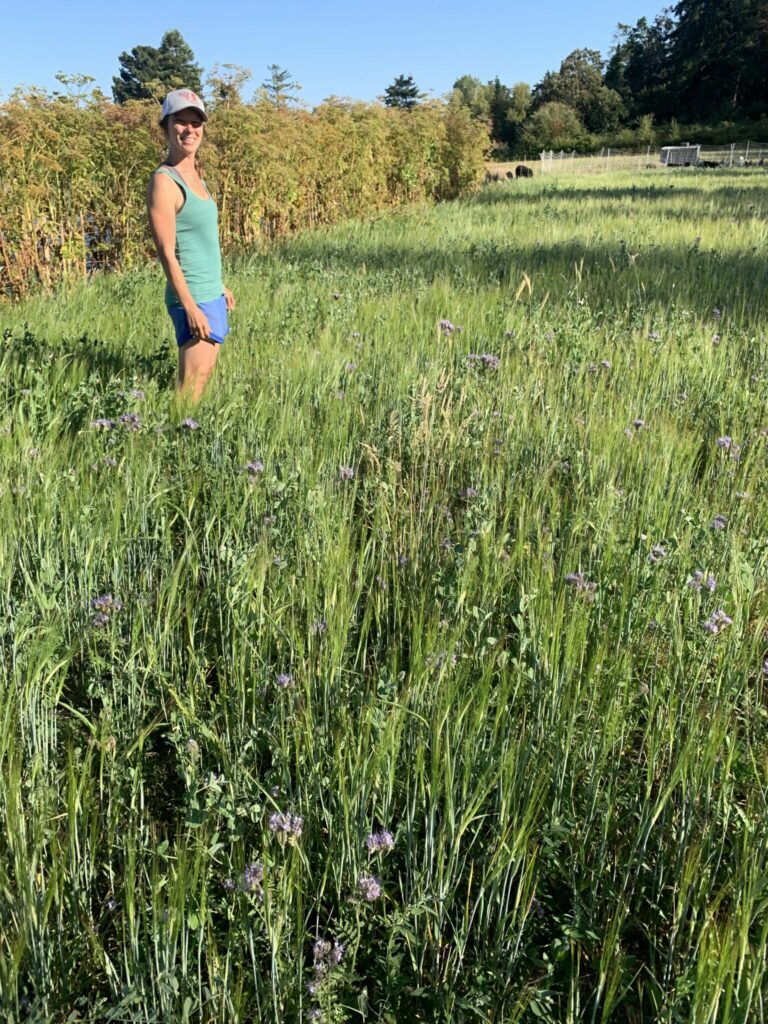
CSA Crop Planning 101
Ever wonder what it takes to design a CSA crop plan? How do we ensure that there are at least 8 crops each week for the farmshare, with a revolving diversity of items and without too much excess left in the field. How are we able to deliver your favorite crops like lettuce and carrots on lots of weeks but fennel and kohlrabi not so much? The answers is a mix of fancy Excel algorithms, years of fine tuning and innate genius (okay, probably not that). We start by designing our theoretical ideal crop plan: We put crops on the y axis, dates on the x axis and then mark which crops we want to give each week. This requires knowing how early crops can conceivably be grown and harvested, how many weeks in a row a specific crop needs to be harvested, and a general idea of what makes a happy CSA customer. It’s also necessary to know how many weeks a crop can hold in the field before bolting or getting pithy, fibrous or bitter. Then we work backwards from each harvest date for each crop, subtracting the Days to Maturity in order to generate a planting date. This involves knowing approximately how many days it takes to mature a radish planted on Mar 17, or a zucchini transplanted on May 20, which is specific to every growing region. At this point we have a long list of hundreds of planting dates for over 40 different vegetable crops which we call our….Planting Calendar. Some crops like peppers only have one planting date while others like carrots or beets have six or seven different dates. (Since carrots only hold in the field 3 weeks we have to plant them every 3 weeks to have a constant supply). Some days we plant LOTS of crops and some days we plant none.
Okay, now that we have our timing figured out, let’s talk amounts or “bed feet.” To know how many bed feet (number of linear feet in a 5ft wide bed) of carrots we need to plant for, say, 2 weeks of CSA, it’s important to have a rough guess on what carrots yield. These figures can be looked up online, but it’s better to gather your own farm-specific data over several years of harvests based on your own soils, climate, pests, diseases, etc. At this point in our careers we know that broccoli yields about 1.3 heads per bed foot, and so we can be pretty certain that 77 bed feet will be enough for 100 CSA members. So, we then write 77 ft next to the corresponding broccoli date in our planting calendar. (This also assumes you already know the correct planting spacing with the bed, but that’s getting a little in the weeds). We then always overplant about 15%, assuming there will be some crop loss from disease, insect damage, bolting, bad germination, or a million other reasons.
Okay that’s an extremely simplified run-down of crop planning, but hopefully it gives you an idea of the planning required for every crop, every week of the season.
Cover Cropping Foibles
| Farming often feels like an impossibly complex, multivariate puzzle that resets itself every few minutes, often before you can even discern if you took any successful steps toward solving it. It’s like a rubik’s cube that only gives you 2 minutes a day to figure the damn thing out. It’s like that movie Groundhogs Day, except that…. Okay, terrible metaphors aside, we often feel like we’re just winging it. Nothing exemplifies this feeling more than cover cropping. Trying to find the best covercrop to fit the right season, the right soil moisture, current crop residue, given weed pressure, future cash crop planting date, nutrient needs of the soil, etc can feel a bit perplexing. Let’s say we’re trying to find the right cover to plant after tilling in our summer brassicas. Winter Rye is a wonderfully hardy winter cover, but is hard to kill in the spring and its stubble takes forever to break down, often suppressing the germination of small vegetable seeds. So rye is really only appropriate if we’re planning on sowing a late summer or fall cropthe following year. But most of our late season crops are brassicas, and we just planted those here this year, and we really should rotate out of brassicas at least two years between plantings. Sooo maybe it’s better to go with Cayuse Oats in this field, which die over winter after a few frosts and will allow us to get in an early non-brassica spring crop. Nope, this particular field is generally full of standing water until May, so we need something that will survive the winter and put on growth in early spring, helping transpire the soil moisture out of the field so we can get our tractor in there. So, maybe Barley? Sure, let’s try Barley. But now what legume should be coupled with it? Crimson clover is nice, but probably won’t compete well with winter weeds. Field peas are good, but don’t really fix that much nitrogen, and we pulled lots of nitrogen out of this field with all those long-season kales. How about Hairy Vetch? Yeah, lets try that, I mean, as long as the field dries out in time to mow it in April so the vetch doesn’t set seed and create vetch weeds for years to come. Okay, let’s be sure to document our seeding date and how many lbs per bed of seed we applied so we can compare to other experimental plots in other fields. 3 days later: Oh, crap, my discs weren’t set up perfectly so the seed didn’t get buried quite deep enough and germination was crappy and then then 300 blackbirds came in and ate 75% percent of the germinating seed and…screw it. Try again next year?  |
When the Farm Catches the Cold: Winter Farming Preparations
We’ve had a few decent frosts already this fall, and while I can’t remember clearly when they came in previous years, it seems a bit early for temps this low. Here on Shore Meadows Rd, the actual nighttime temps always seem 5-10F lower than the forecasted lows. So, when the forecast predicts 40F lows, it’s a good time to begin going into frost-preparation mode (we’re in it!).
While most of our fall crops can handle varying degrees of freezing temps, there are still a few tender items in the field that need monitoring. Mid-large sized broccoli and cauliflower heads can begin to rot even with a slight frost exposure. Lettuces, bok choi, chards, frisee and escarole are also fairly tender. So, during weather like this we generally cover these crops with heavy-duty floating row cover (which can prevent freezing as low as ~22F.) Another strategy is to harvest before the frosts come and store the veg in the walk-in cooler (never more than a week) until CSA, farmer’s market, etc. The latter option isn’t our preference, as we like our veggies delivered/sold as fresh as possible.
Today (Monday), in anticipation of a potentially serious frost later tonight, we harvested our broccoli, salad mix and parley. Generally, we would harvest everything the day of CSA. Another reason for harvesting today vs tomorrow is the possible lack of frost-free, daylight harvesting hours tomorrow. Often, when it’s really cold, the crops down thaw out until afternoon (if at all!), giving us no time to harvest for CSA. Harvesting veggies when partially frozen will result in the premature wilting and rotting in storage.
Of course, another strategy for fending off frost is planting inside greenhouses or tunnels. Unfortunately, our tomatoes, eggplants, and pepper usually don’t wind down until early Oct, too late for a fall planting of greens in the greenhouse. We get more money out of milking these high-value summer crops into late summer and early fall than we could from a single planting of fall spinach or arugula.
Our main strategy in warding off death-by-frost is variety selection. Ten years of variety trials have equipped us with tons of knowledge about the relative cold hardiness of fall vegetables varieties. This is one of our main criteria in choosing which varieties are planting for our fall CSA.
